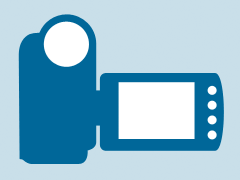The Cutting Edge of Medical Technology Content, Community & Collaboration
Every material has a distinctive spectrum. The spectrum of a material tells us about its chemistry. Hyperspectral images produce a spectrum (represented as several hundred numbers) at each pixel in an image. So hyperspectral images enable us to map variations in chemistry.
The first hyperspectral scanners, built in the 1980's and 1990's, were designed for airborne applications, primarily for mineral, environmental and military applications. However, in recent years, hyperspectral microscopes and cameras have been developed and are being used for terrestrial applications in areas such as medical diagnosis, burns analysis and skin cancer, biosecurity, pharmaceuticals, forensics and in agribusiness.
A significant focus over a number of years has been on developing fast and sophisticated algorithms and software for "unmixing" spectra into their pure ingredients, both when the pure ingredients are known and when they are unknown. This talk provides an overview of various algorithms, and demonstrates their application to some mineral, remotely sensing and biological data sets. Finally, it discusses some unsolved statistical and computational problems associated with these packages.
Speaker: Mark Berman
Mark Berman received the B.Sc.(Hons.) degree and University Medal in mathematical statistics from the University of New South Wales in 1974, and the Master of Statistics degree from the same institution in 1976. In 1978, he was awarded the Ph.D. and D.I.C. degrees in mathematical statistics by the Imperial College of Science and Technology, London.
He was a visiting lecturer in the Department of Statistics at the University of California, Berkeley during 1978-1979. Most of his time since then has been with the CSIRO Division of Mathematical and Information Sciences (CMIS), Sydney, where he is now a Chief Research Scientist. He led CMIS' Image Analysis Group from 1989 to 2000. He spent 1988 at the Melbourne Research Laboratories of Broken Hill Proprietary Ltd. where he established the Image Processing and Data Analysis Group. His research interests are in image analysis (especially hyperspectral), spectroscopy and spatial data analysis.
Since 2007, Dr. Berman has been working part time at CMIS. During this period, he has also given Ph.D courses in spectroscopy and hyperspectral image analysis at the Technical University of Denmark and Stanford University.
Views: 50
Comment
© 2024 Created by CC-Conrad Clyburn-MedForeSight.
Powered by
![]()

You need to be a member of MedTech I.Q. to add comments!
Join MedTech I.Q.